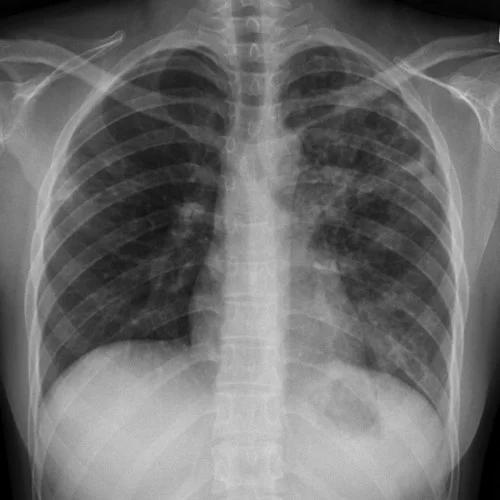Tuberculosis (TB) is a potentially life-threatening infection that mainly affects the lungs. The bacteria which cause tuberculosis can easily spread from one person to another through droplets that get released in the air when an infected person coughs or sneezes.

What is tuberculosis?
Tuberculosis is an air-borne bacterial infection. It most commonly affects the lungs (pulmonary tuberculosis) but in some cases, can also affect other parts of the body (extrapulmonary tuberculosis) like the brain, lymph nodes, joints, bones, and kidneys.
Tuberculosis can be categorized into two kinds: active TB (TB case where a patient displays TB symptoms) and latent TB (TB case where a patient does not feel any of the symptoms and are not infectious).
What are the causes of tuberculosis?
Tuberculosis is caused by the bacterium Mycobacterium tuberculosis and is considered an air-borne disease. It spreads when an infected person coughs or sneezes without covering their face, releasing microscopic droplets of saliva and mucus into the air.
Although a contagious disease, it is not easy to catch tuberculosis from strangers. Infection typically happens between people in constant close contact with each other, such as family members, officemates, schoolmates, or dormmates.
What are the symptoms of tuberculosis?
People infected with the tuberculosis bacteria do not always get sick. This is because their immune system is able to fight off the bacteria and prevent it from causing symptoms to arise. This is why tuberculosis cases are categorized into two:
- Latent TB – patients who have the tuberculosis but the bacteria in the body is inactive and non-contagious. Latent TB patients do not display any symptoms. Latent TB can turn into active TB if left untreated.
- Active TB – commonly referred to as TB disease. Active TB cases are the ones that display symptoms and are contagious. A person can develop active TB weeks or even years after becoming infected with the tuberculosis bacteria.
Symptoms of active tuberculosis include:
- Coughing for three or more weeks
- Coughing up blood or mucus
- Chest pain, or pain with breathing or coughing
- Unintentional weight loss
- Fatigue
- Fever
- Night sweats
- Chills
- Loss of appetite
Tuberculosis cases that affect other parts of the body, also known as extrapulmonary tuberculosis, will have symptoms different from pulmonary tuberculosis. Symptoms will vary depending on the organs involved – tuberculosis of the spine may cause you back pain, tuberculosis of the kidney will cause blood in your urine.
When to see a doctor
Schedule an appointment with your doctor if you’re experiencing a fever, unexplained weight loss, night sweats, or a cough that won’t go away. These are all signs of TB, but testing will need to be done in order to confirm it. See a doctor right away if you’ve been exposed to anyone who has TB.
What are the drugs for tuberculosis?
Treatment for tuberculosis (whether active or latent) typically lasts several months. This includes what is called first line treatment. Your doctor may prescribe any or a combination of the following generic drugs for tuberculosis:
- Isoniazid
- Rifampin
- Pyrazinamide
- Ethambutol
Treatment may last as long as six months or more. It is important to finish your treatment, so the TB bacteria does not become resistant to drugs.
Tuberculosis strains that are resistant to drugs will go through second line treatment. These are:
- Ethionamide
- Moxifloxacin
- Levofloxacin
- Cycloserine
- Kanamycin